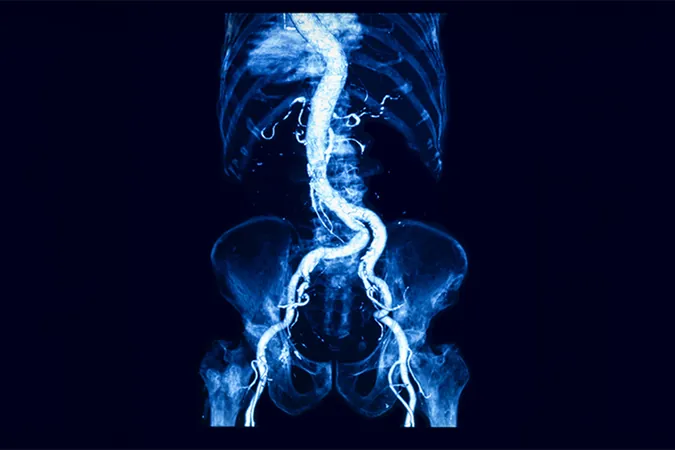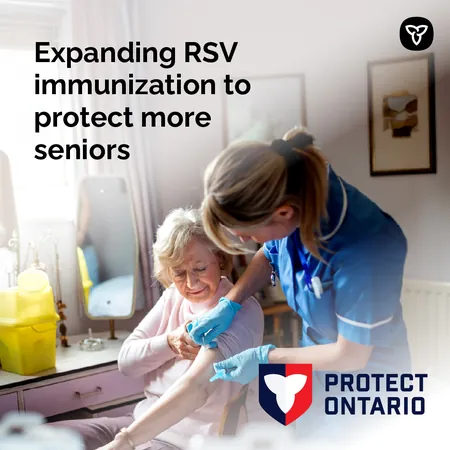
Unlocking the Secrets of Aneurysms: A Game-Changer in Prevention
2025-07-25
Author: Jacques
The Hidden Killer: Abdominal Aortic Aneurysms
Abdominal aortic aneurysms (AAAs) are a silent assassin, particularly striking men over 65 in Canada. They remain largely undetected until it's too late, making them a leading cause of death among this demographic. Shockingly, current medical science offers no preventive treatments against the growth and catastrophic rupture of these life-threatening anomalies.
New Research Shines a Light on Aneurysm Formation
However, groundbreaking research from the University Health Network (UHN) has begun to unravel the mysterious origins of AAAs and how smoking exacerbates their formation. This insight could pave the way for targeted therapies that could save countless lives.
What Exactly Are Abdominal Aortic Aneurysms?
AAAs manifest as a dangerous swelling of the abdominal aorta—the major vessel responsible for transporting blood from the heart to the abdomen. As the aorta’s walls weaken and stretch, the risk of rupture skyrockets, leading to surgical emergencies with grim survival rates of 50% to 85%.
Smoking: The Unexpected Culprit
Despite the existence of known risk factors, our understanding of how AAAs emerge remains limited. A team led by Dr. Clinton Robbins at UHN investigated the effects of two primary contributors: cigarette smoke and high cholesterol. In pre-clinical lab models, they discovered that cigarette smoke acts as a catalyst for aneurysm formation by harming the protective lining of the aorta.
The Molecular Mechanism Behind the Threat
Using cutting-edge genetic sequencing, the researchers identified that smoking-induced damage leads to inflammation and attracts immune cells known as macrophages into arterial plaque. These cells release destructive enzymes that degrade the aortic wall's elastic fibers, resulting in an expansion that mirrors a balloon on the verge of bursting.
A New Hope in Treatment?
Crucially, the study pinpointed a unique type of inflammatory macrophage that appeared consistently in both lab models and human cases, playing a pivotal role in this damaging process. Dr. Robbins emphasizes, 'This research sheds light on how smoking aggravates AAAs and identifies the immune cells that facilitate this destruction.'
Transforming Research into Real-World Solutions
With these findings, there’s renewed hope for treatments that could block these harmful pathways, potentially stopping aneurysms in their tracks before they lead to fatal consequences. Dr. Robbins, a prominent figure in cardiovascular immunology, believes that these insights could revolutionize the care provided to at-risk patients.
A Collective Effort for Brighter Outcomes
This pioneering work was made possible through generous donations to the UHN Foundation, underscoring the community’s role in advancing medical research and innovation.









 Brasil (PT)
Brasil (PT)
 Canada (EN)
Canada (EN)
 Chile (ES)
Chile (ES)
 Česko (CS)
Česko (CS)
 대한민국 (KO)
대한민국 (KO)
 España (ES)
España (ES)
 France (FR)
France (FR)
 Hong Kong (EN)
Hong Kong (EN)
 Italia (IT)
Italia (IT)
 日本 (JA)
日本 (JA)
 Magyarország (HU)
Magyarország (HU)
 Norge (NO)
Norge (NO)
 Polska (PL)
Polska (PL)
 Schweiz (DE)
Schweiz (DE)
 Singapore (EN)
Singapore (EN)
 Sverige (SV)
Sverige (SV)
 Suomi (FI)
Suomi (FI)
 Türkiye (TR)
Türkiye (TR)
 الإمارات العربية المتحدة (AR)
الإمارات العربية المتحدة (AR)